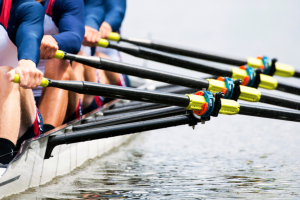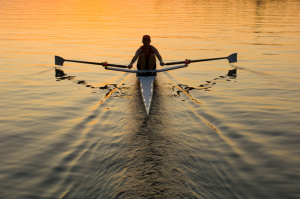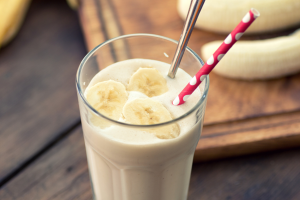25 Feb Eating for rowing
March is the peak time for rowing season, where two of the largest regattas for school rowers (Head of School Girls and Heads of the River) both occur. The physical training is a significant component for success in the sport, but supporting these training sessions and regattas by being well fuelled is often an overlooked aspect.

How to eat to support training and racing demands
Firstly, eating enough energy (kilojoules or calories) to support training, competition and recovery is imperative. Frequent meals and snacks are a great place to start in order to make steps towards meeting these high targets.
Another key element to eating for success is carbohydrates. They should make up the backbone of your nutrition strategy, as carbohydrates are our bodies primary source of fuel.
Carbohydrate intake should generally be made up of high fibre, low GI varieties, such as wholemeal bread, brown rice, rolled oats or starchy vegetables, such as potato and pumpkin. The inclusion of low fibre, high GI varieties (which will allow carbohydrates to be accessible quicker) are equally as important when necessary, such as closer to training or racing. These include white bread, honey, jam, lollies and sports drinks.
Your carbohydrate intake should reflect how active you are on any given day or in preparation for how active you are about to be, where more exercise will require more carbohydrates. We store carbohydrates in our body as glycogen so that we are able to sustain periods of exercise when we are without immediate access to food. That said, during particularly intense or long training sessions, topping up carbohydrate stores with easily accessible carbohydrates may be required in order to sustain the level of work being undertaken. It is important to also top up glycogen stores after training or racing in order to continue having energy throughout the day and to be ready for your next training session or race.

Regular intake of protein throughout the day helps to support lean muscle development, strength gains and muscle repair. Protein can be found in dairy products (yoghurt, milk, cheese), meat, poultry, fish, eggs, tofu and legumes. Ideally, consume a meal or snack containing protein within 1-2 hours of concluding exercise to assist your body in the recovery process, which also prepares you for your next training session or race.
Rowing is a summer sport, so athletes are spending hours of time in the heat without any protection (besides a hat!) from the sun while rowing on rivers and lakes. Hydration should be a priority for a rower of any level. Aim to begin any session well hydrated and always have a water bottle with you, especially in the boat. Water is the preferred liquid, but alternatives can sometimes come in handy. Hydrolyte contains electrolytes that promote absorption and fluid retention and therefore helps to keep you well hydrated or ‘assists in’ becoming hydrated/achieving hydration. Electrolytes are also often lost through sweat, which are important for muscle contraction. Sports drinks (such as Gatorade or Powerade) contain fluid, electrolytes and carbohydrates that are quick and easy to digest.

Practical Tips
- Given that times of training can often be before or after school, food that is easy to transport and consume is key. Also, regattas can last many hours, so packing well is important.
- In a meal that is consumed about 3-4 hours before rowing or as recovery just after we are looking for:
- Good quality carbohydrates that can fuel or refuel the body
- Protein to repair muscles and keep us full
- Fruits or vegetables to make up a healthy overall diet
- Some examples include:
- Fruit smoothie
- Egg and salad roll
- Bircher muesli with fruit
- Tuna with rice and vegetables
- Sushi roll
- Burrito or poke bowl
- Chicken or tofu stir fry
- Flavoured milk and fruit
- Chicken pesto pasta
- Fruit, yoghurt and muesli
- Your last snack before rowing should be about 1-2 hours prior to ‘top up’ your energy stores. Here we need easy to digest, carbohydrate containing snacks. Some ideas include:
- Fruit toast
- A piece of fruit with a muesli bar
- Honey sandwich on white bread
- Fruit salad
- English muffin or crumpet with jam
- Fruit juice
- Many athletes find it difficult to consume solids after intense exercise. Rowers can also find it uncomfortable to row with a full stomach. Try liquids in these circumstances, such as smoothies, flavoured milk, juice and energy drinks.
- Ensure you try out any new strategies enough times at training sessions before bringing them to your regattas, where you’ll also be experiencing some nerves!
- Carry your drink bottle around and take frequent sips throughout the training sessions.
For individualised support our Dietitian and expert in rowing, Alex is consulting in Glen Iris and providing online (telehealth consults).
Book Dietitian Today
References:
http://www.pulteney.sa.edu.au/assets/Rowing/AIS-Nutrition-Strategies-for-Rowing.pdf
https://www.sportsdietitians.com.au/factsheets/food-for-your-sport/rowing/
https://worldrowing.com/news/feature-using-nutrition-to-power-your-rowing


